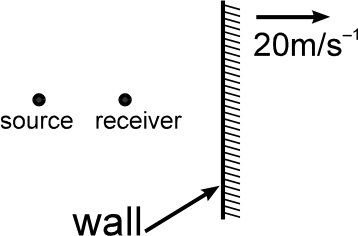The wavelength of light received from a galaxy is 10% greater than that received from identical source on the earth. The velocity of the galaxy relative to the earth is
A) 3×108ms−1
B) 3×107ms−1
C) 3×106ms−1
D) 3×105ms−1
The correct Answer is:B
To solve the problem, we need to find the velocity of the galaxy relative to the Earth based on the change in wavelength of light received from it. Here’s a step-by-step solution:
Step 1: Understand the Given Information
We are given that the wavelength of light received from a galaxy is 10% greater than that received from an identical source on Earth. This means:
- If the original wavelength (λ) is received from Earth, the wavelength from the galaxy (λ') can be expressed as:
λ′=λ+0.1λ=1.1λ
Step 2: Calculate the Change in Wavelength
The change in wavelength (Δλ) is given by:
Δλ=λ′−λ=1.1λ−λ=0.1λ
Step 3: Use the Formula for Velocity
We can relate the change in wavelength to the velocity of the galaxy using the formula:
V=Δλλ⋅c
where:
- V is the velocity of the galaxy relative to Earth,
- c is the speed of light (approximately 3×108 m/s).
Step 4: Substitute the Values
From the previous steps, we have:
Δλλ=0.1
Substituting this into the velocity formula gives:
V=0.1⋅c=0.1⋅(3×108 m/s)
Step 5: Calculate the Velocity
Now, calculate the velocity:
V=0.1⋅3×108=3×107 m/s
Step 6: Identify the Correct Option
The calculated velocity V=3×107 m/s corresponds to option B.
Final Answer
The velocity of the galaxy relative to the Earth is:
3×107 m/s
---
We are given that the wavelength of light received from a galaxy is 10% greater than that received from an identical source on Earth. This means:
- If the original wavelength (λ) is received from Earth, the wavelength from the galaxy (λ') can be expressed as:
λ′=λ+0.1λ=1.1λ
The change in wavelength (Δλ) is given by:
Δλ=λ′−λ=1.1λ−λ=0.1λ
We can relate the change in wavelength to the velocity of the galaxy using the formula:
V=Δλλ⋅c
where:
- V is the velocity of the galaxy relative to Earth,
- c is the speed of light (approximately 3×108 m/s).
From the previous steps, we have:
Δλλ=0.1
Substituting this into the velocity formula gives:
V=0.1⋅c=0.1⋅(3×108 m/s)
Now, calculate the velocity:
V=0.1⋅3×108=3×107 m/s
The calculated velocity V=3×107 m/s corresponds to option B.
The velocity of the galaxy relative to the Earth is:
3×107 m/s
Topper's Solved these Questions
- WAVES OPTICSBOOK - AAKASH SERIESCHAPTER - WAVES OPTICSEXERCISE - EXERCISE -II (DIFFRACTION)
17 Videos
- WAVES OPTICSBOOK - AAKASH SERIESCHAPTER - WAVES OPTICSEXERCISE - EXERCISE -II (POLARISATION)
10 Videos
- WAVES OPTICSBOOK - AAKASH SERIESCHAPTER - WAVES OPTICSEXERCISE - EXERCISE -IB (ASSERTION AND REASON)
67 Videos
- WAVESBOOK - AAKASH SERIESCHAPTER - WAVESEXERCISE - EXERCISE-III (Doppler effect :)
15 Videos
Similar Questions
Knowledge Check
The escape velocity from the surface of the earth is (where RE is the radius of the earth )
A√2gREB√gREC2√gRED√3gREThe wavelength of spectral line coming from a distant star shifts from 600 nm to 600.1 nm. The velocity of the star relative to earth is
A50 km s−1B100 km s−1C25 km s−1D200 km s−1Light from the sun reaches the earth approximately in
A5sB50sC500sD0.5s
The apparent wavelength of light from a star moving away from earth is observed to be 0.01% more than its real wavelength. The velocity of star is
View SolutionThe apparent wavelength of light from a star moving away from the earth is 0.02% more than the actual wave length. What is the velocity of star
View SolutionThe escape velocity of a body from the surface of the earth is equal to
View SolutionIf light from a galaxy observed on the earth's surface has a red shift, then
View SolutionA source of sound of frequency 300 Hz and a receiver are located along the same line normal to the wall as shown in the figure. Both the source and the receiver are stationary and the wall receeds from the source with velocity 20ms−1.If the beat frequency registered by the receiver is 240x Hz then x is :
(Assume Vsound=300 m/s).

View Solution
